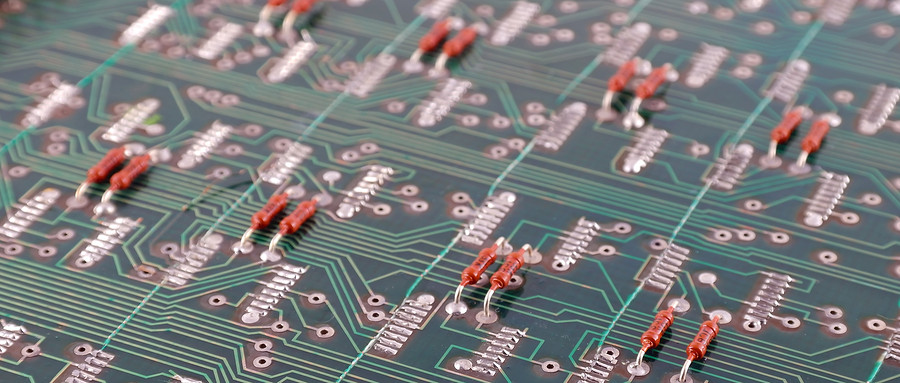




























During the production and use process, the product surface is often prone to be contaminated, corroded, or oxidized. Or due to production defects, negligence and other reasons, foreign matter is introduced and formed, which increases the product defect rate and has a great impact on the product's performance.

| Project Background
Foreign matter refers to substances other than the target item that are mixed into raw materials or products.
During the production and use process, the product surface is often prone to be contaminated, corroded, or oxidized. Or due to production defects, negligence and other reasons, foreign matter is introduced and formed, which increases the product defect rate and has a great impact on the product's performance. There are many reasons for the generation of foreign matter, such as impure raw materials, by-products in the reaction, non-standard process control, or immature process formulas.
| Project Overview
This project analyzes foreign matter to obtain the elements and chemical components it contains. Combining with the manufacturer's understanding of the product and process, the real cause of the foreign matter can be found. Then, through the improvement and adjustment of the formula and process by the manufacturer, the generation of foreign matter can be avoided.
This technology is specifically designed for the analysis of tiny embedded foreign matter, surface pollutants, and exudates on products. For example, it can conduct qualitative analysis on abnormal substances such as particles embedded in or exuded from the surface, small-molecule migrants, spots, oily substances, foggy substances, and rubber blooming, to find the pollution source or incompatible components in the formula. It is one of the most commonly used analysis methods for product improvement.
| Test Objective
① Quickly determine the components of foreign matter or impurities, analyze the causes of their generation, and make rectifications to improve the product yield;
② Improve the formula through the analysis of abnormal substances;
③ Eliminate production hazards;
④ Ensure the stability of production.
| Service Products / Fields
Widely used in chemical products, aviation products and their components, automotive products and their components, LCM series products, PCB&PCBA, electronic components, semiconductor products, etc.
| Main Analysis Methods
|
方法 Methods |
应用范围 Application |
|
红外光谱法 FTIR Fourier Transform Infrared Spectroscopy FTIR |
1.显微FTIR, 仅需10um以上样品即可测试 1. Microscopic FTIR, only samples larger than 10um are required for testing 2.有机物成分分析 (400-4000cm-1 2. Organic component analysis (400-4000cm-1 |
|
扫描电子显微镜和能量色散X射线谱法 SEM/EDS Scanning Electron Microscopy and Energy Dispersive X-ray Spectroscopy SEM/EDS |
1.固体 1. Solids 2.元素分析/元素分布 (B-~U) /形貌观察 2. Elemental analysis/elemental distribution (from B- to U)/morphology observation |
|
俄歇电子能谱分析仪法 AES Auger Electron Spectroscopy AES |
极表面 (0-3nm) 分析设备 Analysis equipment for the extreme surface (0-3nm) |
|
X射线电子光能谱分析法 XPS X-ray Photoelectron Spectroscopy XPS |
1.更精密的元素分析 1. More precise elemental analysis 2.元素价态, 存在形式分析 2. Analysis of elemental valence states and existence forms |
|
飞行时间⼆次离子质谱分析法 TOF-SIMS Time-of-Flight Secondary Ion Mass Spectrometry TOF-SIMS |
ppm级别表面有机成分分析 Surface organic component analysis at the ppm level |
|
动态⼆次离子质谱分析法 D-SIMS Dynamic Secondary Ion Mass Spectrometry D-SIMS |
ppb级表面及芯部成分分析 Surface and core component analysis at the ppb level |
|
气相色谱质谱联用仪分析法 GC-MS Gas Chromatography - Mass Spectrometry GC-MS |
1.固体/液体 1. Solids/liquids 2.易挥发组分测试 2. Testing of volatile components |
If there is any contamination or embedded foreign matter in your product, it is urgent to conduct a foreign matter analysis. Otherwise, it may seriously lead to product failure. The analysis engineers at MTT analyze the foreign matter in the product to determine the composition of the foreign matter and the reasons for its formation, and help you solve the problem from the source!
| Surface Foreign Matter Analysis Project
1. Organic foreign matter analysis
A kind of analytical method that, for the organic foreign matter on the product surface, selects specific instruments according to the differences in the form, detection depth, and detection area of the foreign matter, analyzes its organic components, determines its main components, and thus obtains information about the foreign matter.
Under magnified observation, organic foreign matter often shows characteristics such as being relatively transparent and soft.
2. Analysis of inorganic foreign matter
A kind of analytical method that, for the inorganic foreign matter on the product surface, selects specific instruments according to the differences in the form, detection depth, and detection area of the foreign matter, analyzes its inorganic components, determines the elemental composition and content therein, and then analyzes the composition.
Compared with organic foreign matter, inorganic foreign matter shows characteristics such as being harder in texture, having darker and more diverse colors, some having obvious crystal forms, and being less transparent.
3. Analysis of unknown foreign matter
It is mainly a comprehensive analysis carried out when it is difficult to distinguish the type of foreign matter, mainly combining the methods of organic foreign matter analysis and inorganic foreign matter analysis.
For example: embedded foreign matter or abnormal spots in electronic products; surface contaminants, precipitates, oily substances, foggy substances; rubber blooming; yellowing and blackening of industrial products; impurities and by-products of chemical products, etc.
4. Comparative analysis of product abnormal phenomena
The comparative analysis of product abnormal phenomena uses the molecular spectrum characteristics of materials to formulate a rapid consistency detection method to determine the consistency of product materials, thereby analyzing the causes of product abnormal phenomena.
| MTT Advantages
1. Professional Team: A team of highly experienced testing engineers and technical experts.
2. Advanced Equipment: Equipped with internationally leading testing instruments to ensure accuracy and reliability of results.
3. Efficient Service: Rapidly respond to customer needs and provide one-stop, high-efficiency inspection services.
4. Authoritative Certification: The laboratory is certified by ISO/IEC 17025, ensuring that test reports have international credibility.